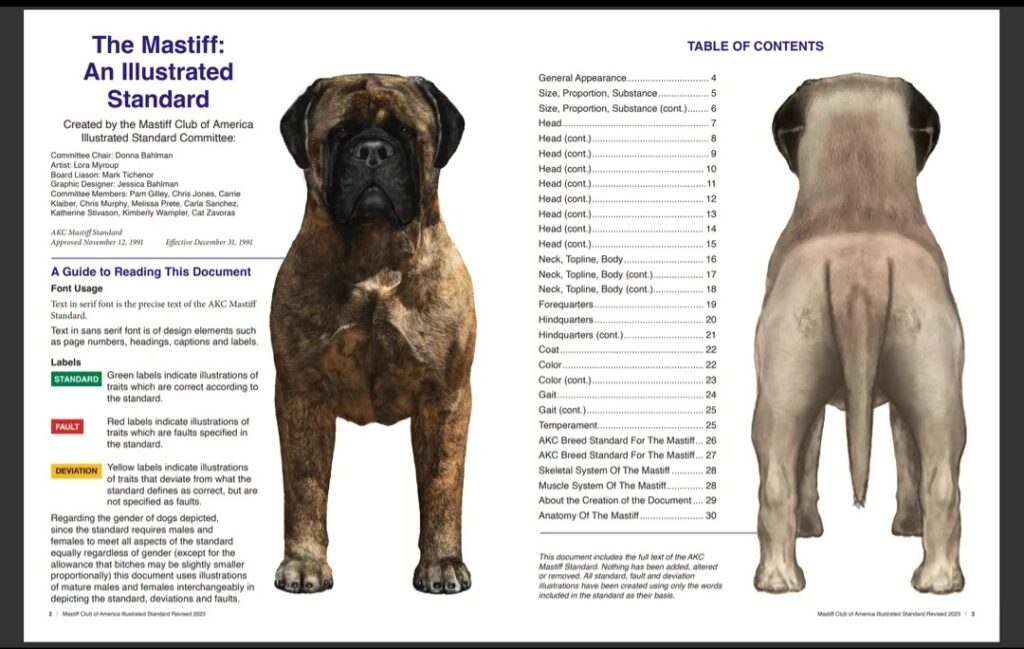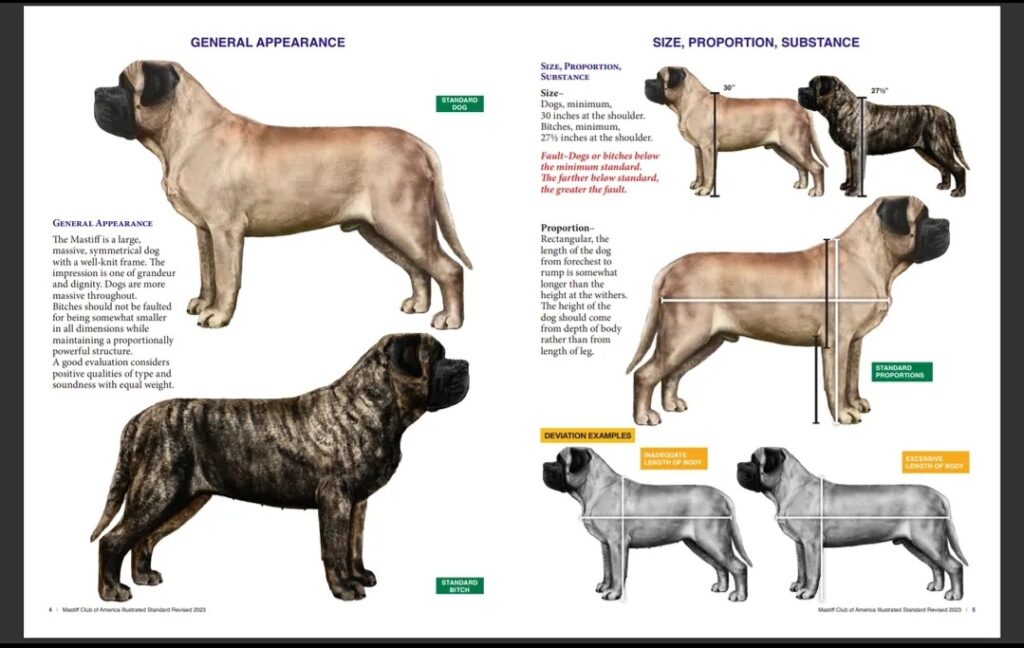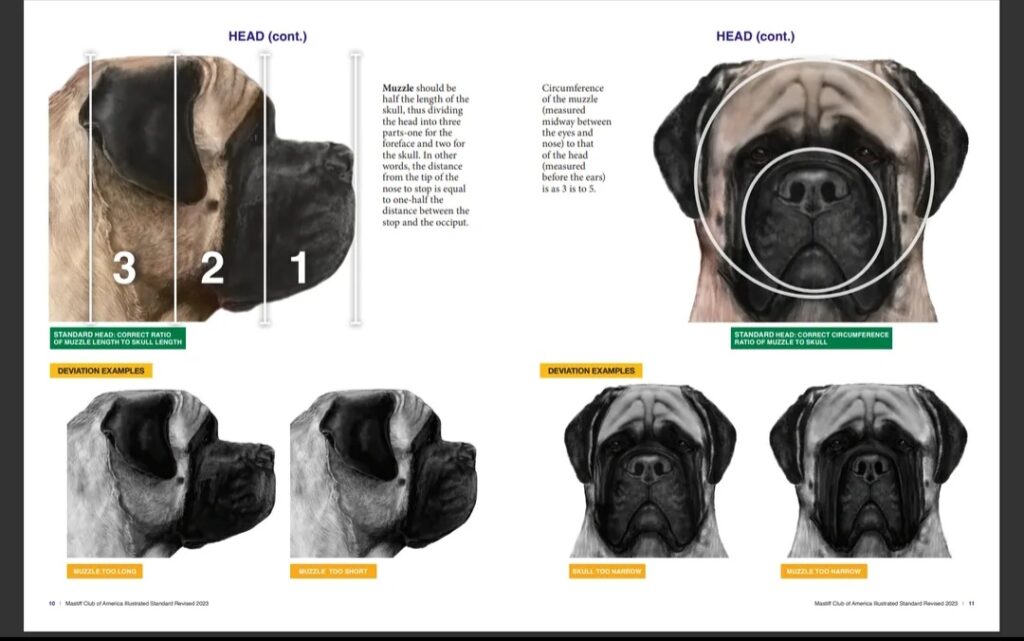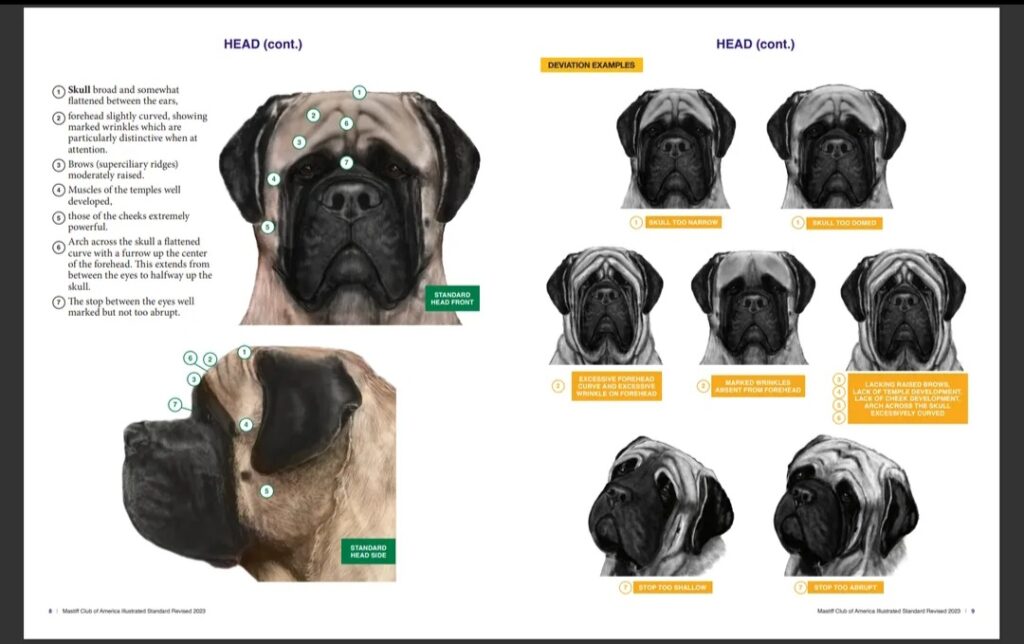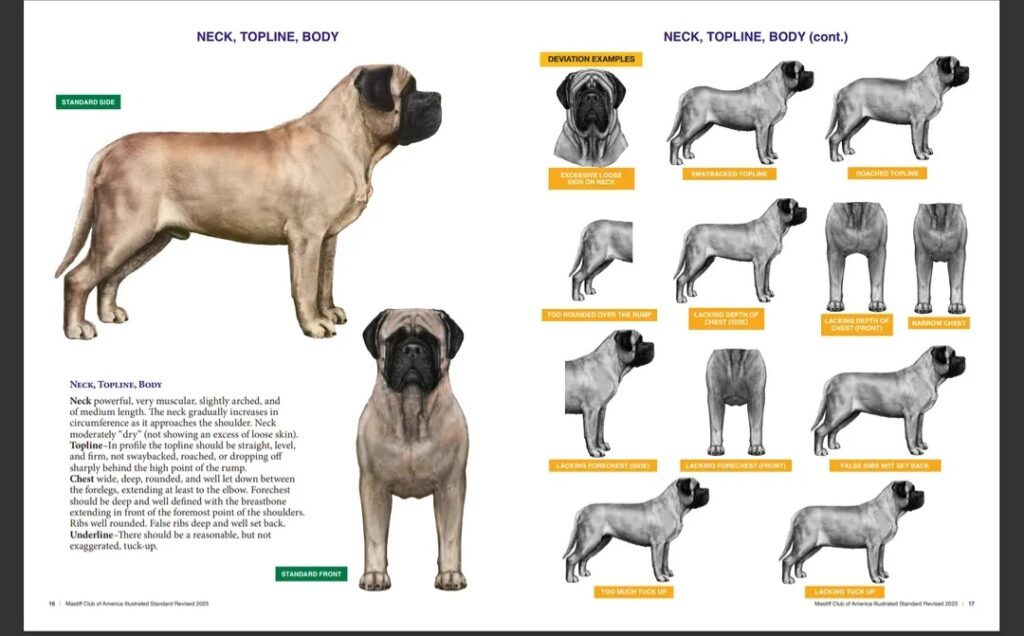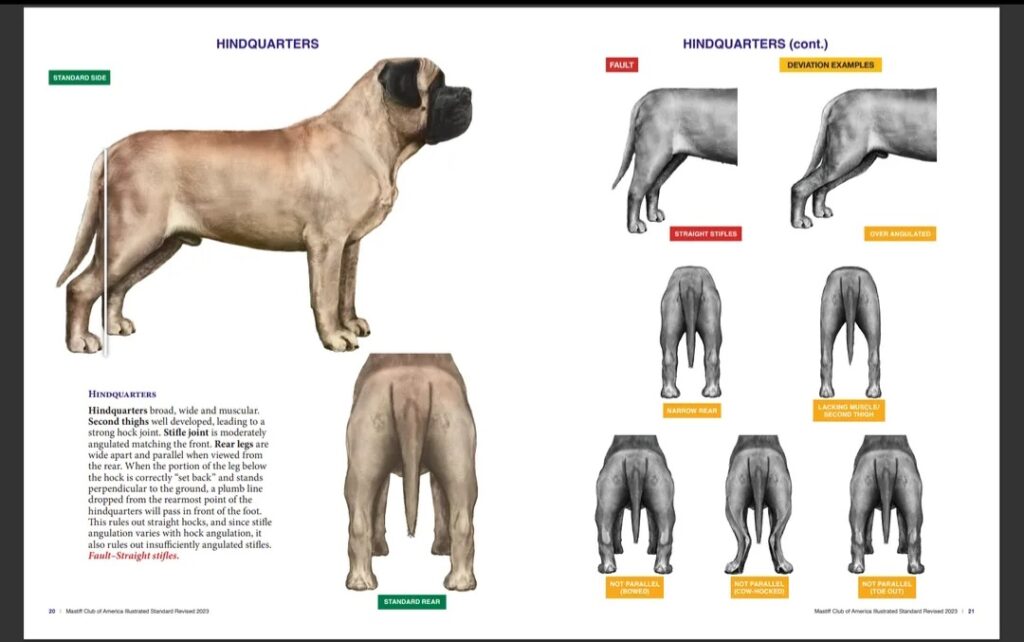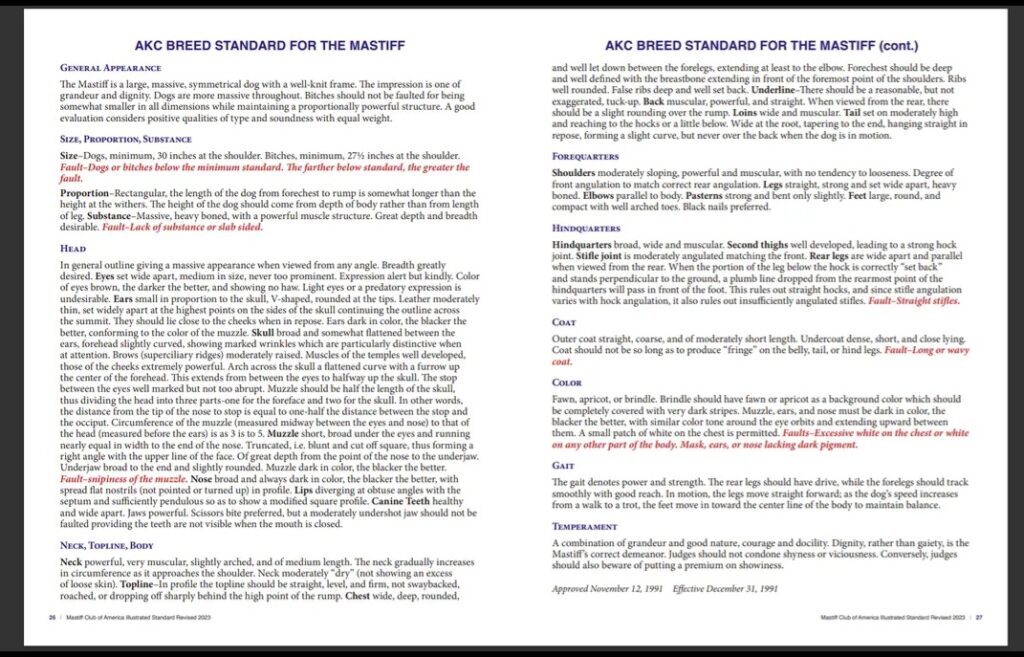ABOUT ENGLISH MASTIFFS
Frequently Asked Questions about our English Mastiffs & Puppies
What Is A Mastiff?
A Mastiff is a giant breed of dog descended from the ancient Alaunt and Molossur breeds. Today, mastiffs is used to describe many different breeds around the world, all descended from the same rootstock. In the USA and other English speaking countries, Mastiff is used to refer to the Old English Mastiff (OEM), developed in England and nearly extinct after WWII. Mastiffs are very large dogs; fawn, apricot, or brindle in color; all with a dark mask and ears; possessing a medium to short coat.
How Big Is The Mastiff?
There is no upper height limit. Mastiffs may range from the minimum of 27 inches to 36 inches for the exceptionally tall ones. There is no weight range in the Mastiff standard - they can weigh anywhere from 100 lbs. to the world's record of 343 lbs. Most Mastiff males weigh from 160-230 lbs. and females weigh 120-170 lbs. This breed is supposed to be very broad with a huge head, wide chest and large bone, and is longer in body than in height. Mastiffs should have a calm, self-assured temperament,be devoted o family and friends, steady, gentle, eager for affection, good with children, calm and self-assured.
What Are Mastiffs Good For?
Mastiffs excel as companions, family members, therapy workers, and watchers of the home. Mastiffs have also done well, when properly trained and conditioned, at carting, agility, obedience, conformation showing, search and rescue (SAR), and weight pulling. And of course, puppy-sitting and child-watching.
Are Mastiffs Easy To Train?
Both easy and difficult. Mastiffs are smart, and they live to please you. However, they can go through phases where they are also stubborn, and these phases can last anywhere from a couple of weeks in puppyhood to (in some cases) most of the dog's lifetime.
A lot depends on the owner's wisdom and perception of the dog's needs. Keep training sessions short (10-15 minutes) and frequent (several times a day) because in addition to their stubbornness, Mastiffs have sensitive feelings and if they get frightened, hurt, or confused, they cannot be budged.
Example: Vesta laid down in the show ring and would not get up! It was her first show and she became confused, so the safe thing to do was to lie down and hide her eyes. We never got mad at her - we just convinced her it was fun and she became a fabulous showdog.
Use lots of treats (Mastiffs love to eat!) and make training a game. Use a happy excited voice and lots of praise but be consistent and firm. Practice on a regular basis. Dogs like to be trained, it gives them a job to do, and they want to please their beloved owners.
Once trained, a Mastiff never needs a stronger correction than a stern voice.
How Does The Bullmastiff Differ From a Mastiff?
The Mastiff is an ancient British breed and its history can be traced back over 2,000 years. The Bullmastiff is a relatively recent breed developed from crossing the Mastiff (60%) and Bulldog (40%) stock. The most noticeable differences are temperament, the conformation of the body and heads and the overall size of the dogs.
Are Mastiffs Aggressive?
A typical Mastiff's temperament, by nature, is one of gentle demeanor. However, as with any breed, the Mastiff can become aggressive for varying reasons. Typically, aggressive behavior is a “learned response” and/or results from a lack of proper socialization during the dog's developmental stages.
Are Mastiffs Good Watchdogs?
Mastiffs are excellent watchdogs. They go to the door and bark, their hackles stand up, and they look formidable but as a breed, Mastiffs are not trigger-happy. They have a gentle, rather than aggressive, nature. Mastiffs tend to react in predictable ways when a tense situation arises between a stranger and their owner. Mastiffs view themselves as a protector and will move between the threat and the owner. No sane mugger would dare reach over a guarding Mastiff.
How Are Mastiffs With Young Children And Strangers?
By nature Mastiffs are gentle and protective with young children providing that they have been raised with children and are accustomed to them. Small children should not be allowed to play roughly with young dogs, i.e. "riding the horsey" because it can permanently traumatize a Mastiff puppy.
How Are Mastiffs With Other Dogs And Animals?
By nature a Mastiff is friendly but aloof toward other dogs. As with any dog they must be properly socialized around other dogs from early puppyhood. When you have two or more dogs, a "pecking order" will develop. Each dog will have his or her place in the "pack hierarchy".
Bringing Your New Mastiff Puppy Home
Make sure you and your family commit yourself to training your puppy. Research your local training facilities and beginning at about 12 weeks old sign up for puppy classes. This will help with socialization and early training of your new puppy.
Move to more advanced classes when your dog is about six months old. Make sure you stay motivated and knowledgeable an untrained Mastiff can prove to be an unacceptable family member. Make sure you work with your new puppy everyday.
Do not ask to much from a young Mastiff Dog physically, such as jumping and long runs while your pup is growing. This can be too hard on the growing joints. Your Mastiff should be about 12-18 months old before any heaving physical demands should be placed on them.
Expose your puppy to as many different experiences as possible, but do not allow your puppy to be traumatized. Remember to protect your puppy, if you protect them at a young age they will protect you for the rest of their lives.
We highly recommend that you use crate training to house train your new Mastiff Puppy. We have found that this works the best as puppies do not like to mess where they sleep. You will find that the crate will become a safe place for them to go, lay down and relax when they are tired.


